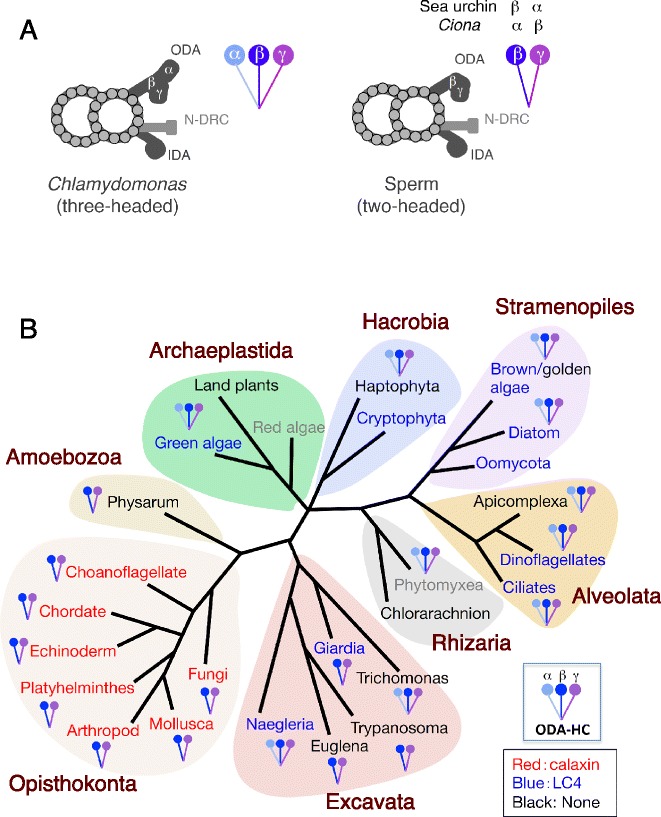Figure 8.

Structure of outer arm dynein and its Ca 2+ sensor across eukaryotic groups. (A) Schematic representation of the number of dynein heavy chains and the morphology of outer arm dyneins observed by electron microscopy. Chlamydomonas outer arm dynein is composed of three heavy chains, α, β, and γ. Ciona outer arm dynein has two heavy chains homologous to the Chlamydomonas β and γ chains. The α and β heavy chains in Ciona and the β and α heavy chains in sea urchin correspond to Chlamydomonas β and γ, respectively. ODA, outer arm dynein; IDA, inner arm dynein; N-DRC, nexin link/dynein regulatory complex. (B) Distribution of two-headed or three-headed outer arm dynein, and calaxin or LC4, across eukaryotic groups. The occurrence of calaxin or LC4 is indicated in red or blue, respectively, in the name of the group. A group name in black or gray indicates the lack of both calaxin and LC4, or not enough genomic information, respectively. The references for the EM images of the axonemes and the outer arm dynein are as follows: Naegleria [146]; Euglena [176,177]; Trypanosoma [66,67]; Giardia [144]; Trichomonas [147]: amoebozoan (Physarum) [101-103]; choanoflagellate (Codosiga botrytis) [178]; chordate (Ciona intestinalis and human) [62,88]; echinoderm (sea urchin: Colobocentrotus atratus) [1,3]; platyhelminthes (Dugesia tigrina) [68,179]; arthropod (Exechia seriara) [180]; Mollusca (Crassostrea gigas) [181]; chytrid fungus (Rhizophlyctis) [182]; green alga (Chlamydomonas) [137]; diatom (Biddulphia levis) [183]; golden alga (Ochromonas) [116]; ciliate (Tetrahymena pyriformis) [184]; dinoflagellate (Wolszymkia micra) [185]; apicomplexan (Plasmodium) [141]; chlorarachnion (Bigelowiella natans) [123]; haptophyte (Chrysochromulina) [186]; and phytomyxean (Plasmodiophora brassicae) [140].
